Lead Generation
A way to convert an end-user into a lead with contact details and request information.
Introduction
This section explains how to implement a Lead Generation (or Lead Generator) activity in a Flow. You can use the Lead Generation activity to create leads from the users interested in a product or service with the best product choices depending on their interests.
Lead Generation Is Not Currently Templated
You need to build this activity from scratch. There may be a templated activity for it in the future, but for now, there is not.
This activity works inside a conversational flow; the user answers several questions to gather their information.
In order to build a Lead Generation activity, you must be able to connect the Flow to an external system to store the lead data. Examples include (but are not limited to):
- Connect to a Customer Communication Platform like Front - gathers the user data then is connected to a User Agent or a Salesperson.
- Connect to a Customer Relationship Management (CRM) - gathers the user data and then is connected to a CRM for further follow-up.
Create a Lead Generation Activity

Choose a blank template
click to enlarge
- Enter a name for your new custom activity. You may choose to call your activity "Lead Generator Template."

Creating a new activity
click to enlarge
Since the Lead Generation is based on when an end-user answers a series of questions, the collected data is saved for the client to reference with an agent or a Customer Relationship Management service (CRM).
Lead Generation Flow Example - Bank
In this activity, the Flow will ask the user a series of questions such as, "Name?", "ID?", "Branch?", "Name?", "Product?".
The Lead Generator Flow can start from an option the user selects in the menu. You can see in the image that the Flow comes from a previous main Flow.
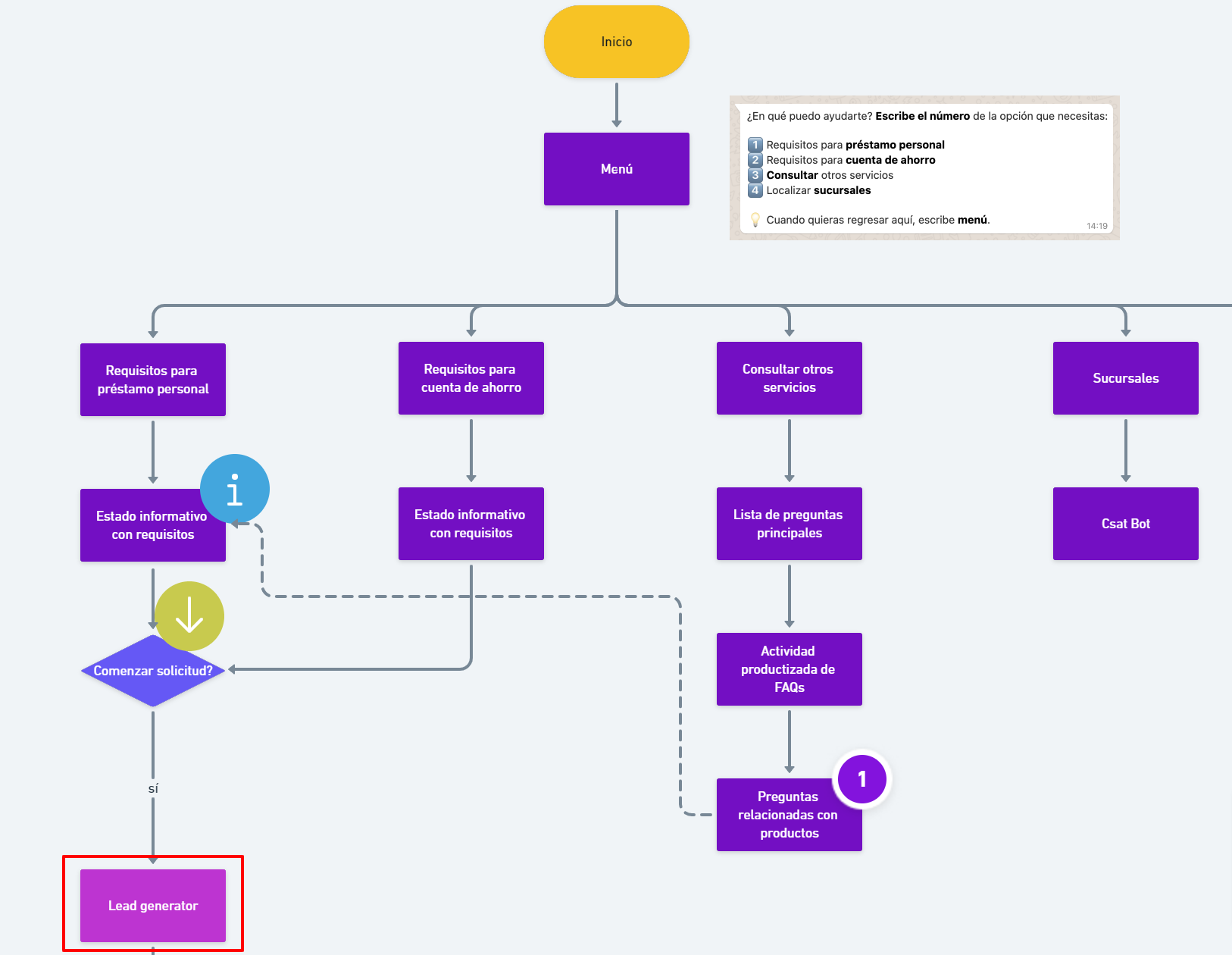
Lead Generation Flow example
click to enlarge
This is a section of an example of a Lead Generation Flow.
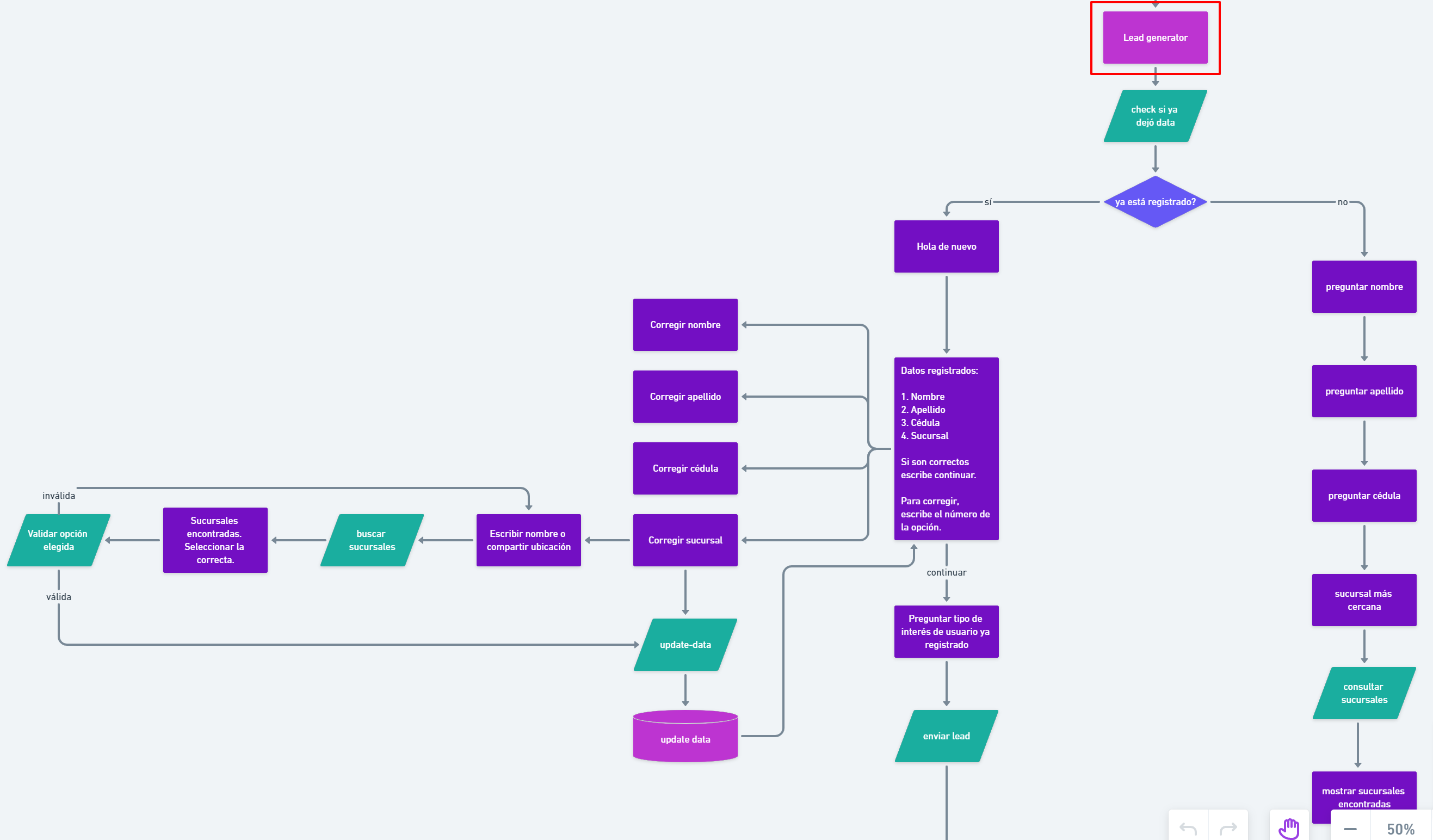
Lead Generation Flow example
click to enlarge
This is the continuation of the example.
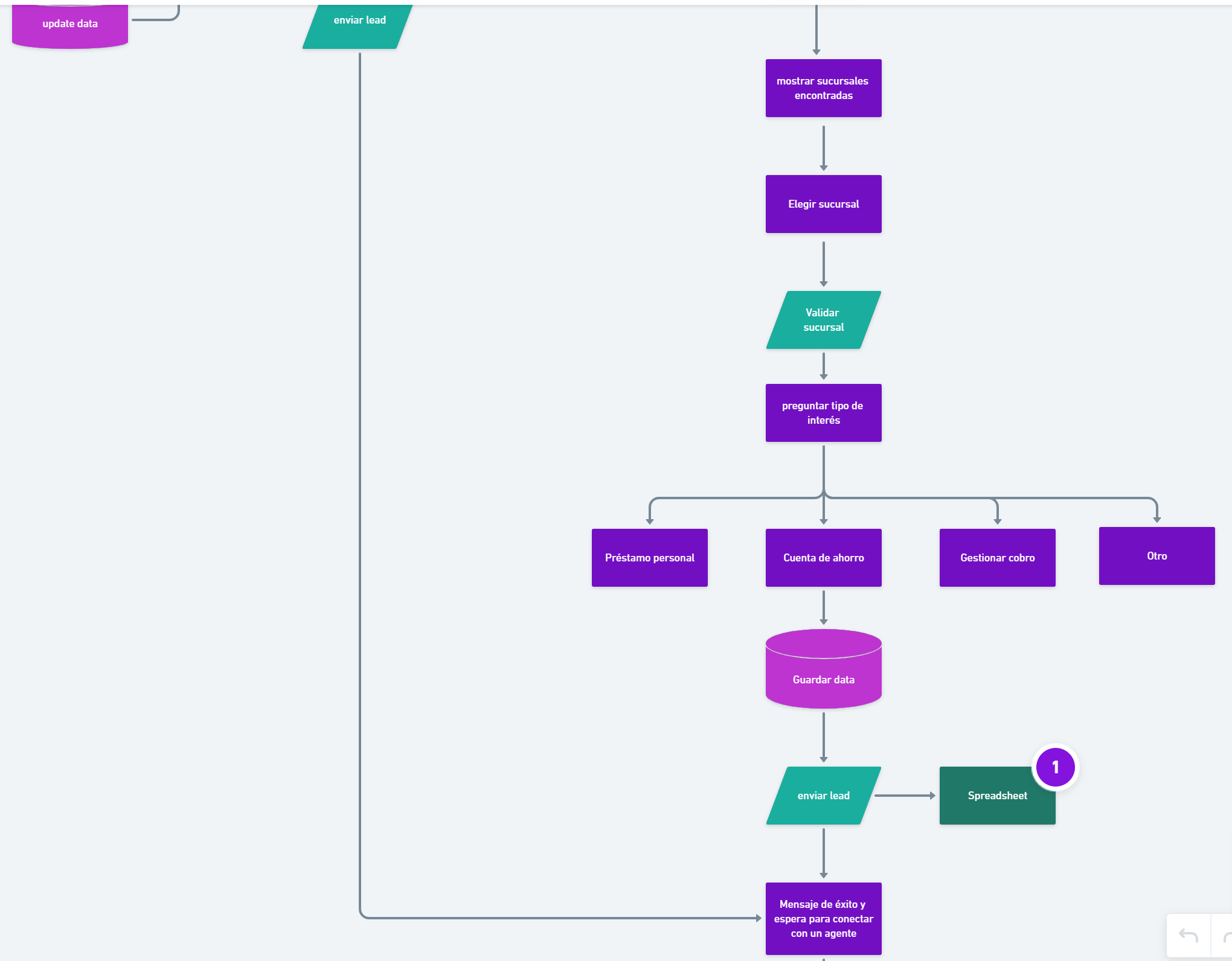
Continuation of the Lead Generation Flow example
click to enlarge
Where the following questions generate the leads:
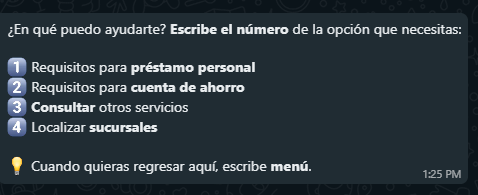
Example of a WhatsApp channel
click to enlarge
Where it means:
How can I help you? Write the number of the option you need:
- Personal loan requirements
- Savings account requirements
- Consult other services
- Locate branches
Whenever you want to come back here, write menu.
In the first two options, Personal loan requirements and Savings account requirements; both options follow the Lead Generation Flow.
The lead contains the following user information once answered: name, ID, phone number, nearest branch, and type of product).
Lead Generation - Flow Builder example
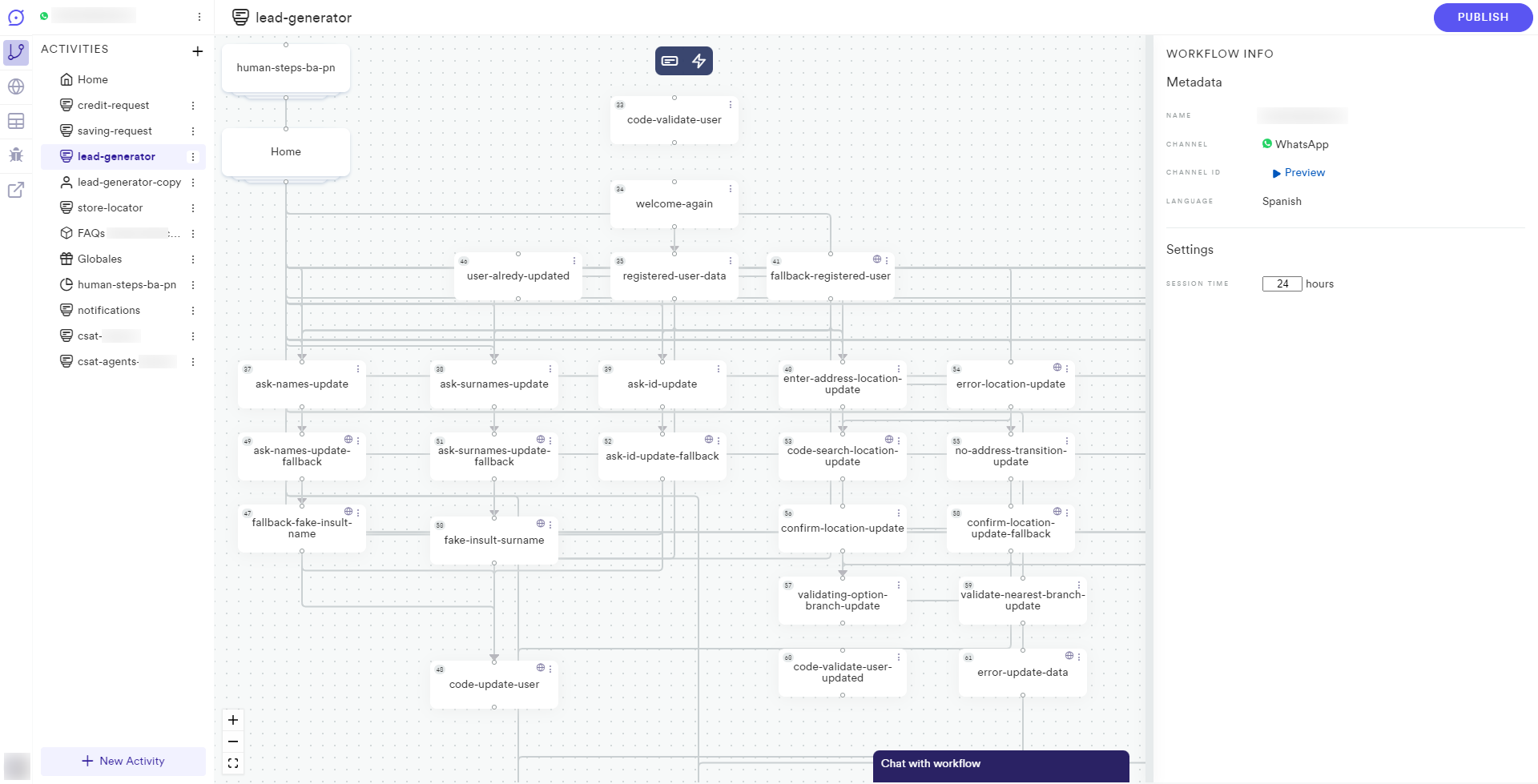
Flow Builder - Lead Generation example
click to enlarge
To enable the Lead Generator in the Flows' channel, start by having the user select the activity that contains the Generator. This is connected to the Flows' main menu.
In the following example, the Lead Generator is connected first through a Flow named Saving Request, which connects to the main menu:
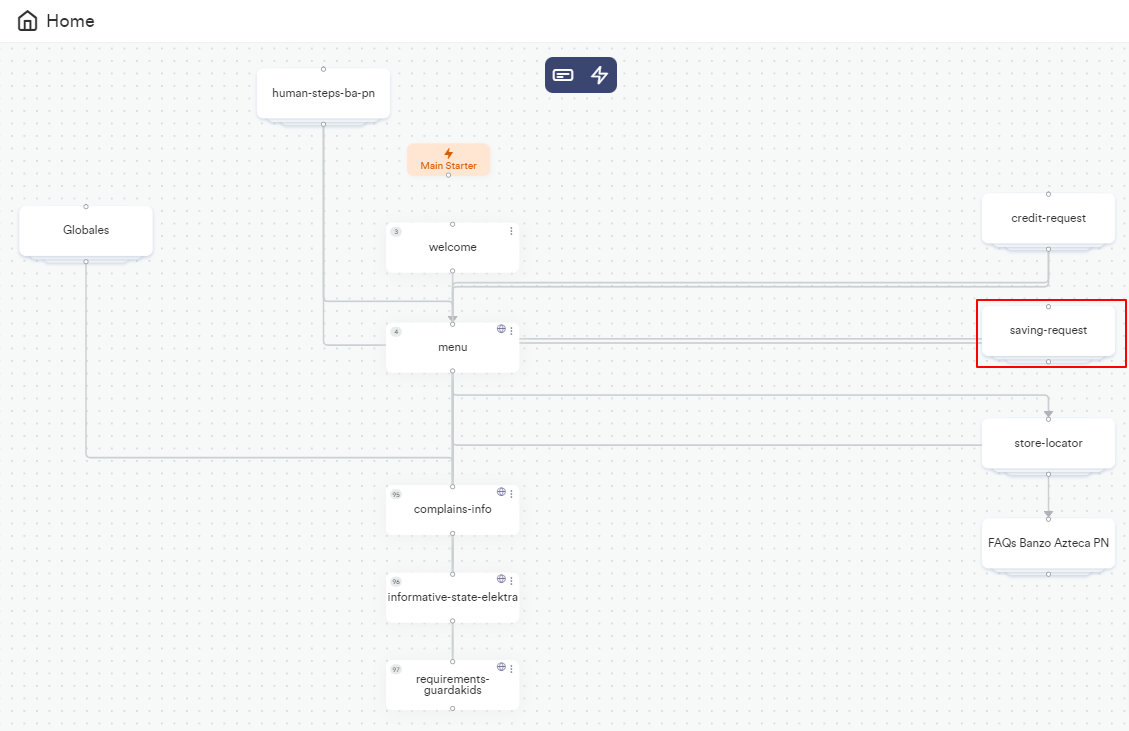
Personal trainer activity
click to enlarge
In the next image, you can see the Lead Generator is connected first through a workflow named Saving Request, which connects to the main menu:
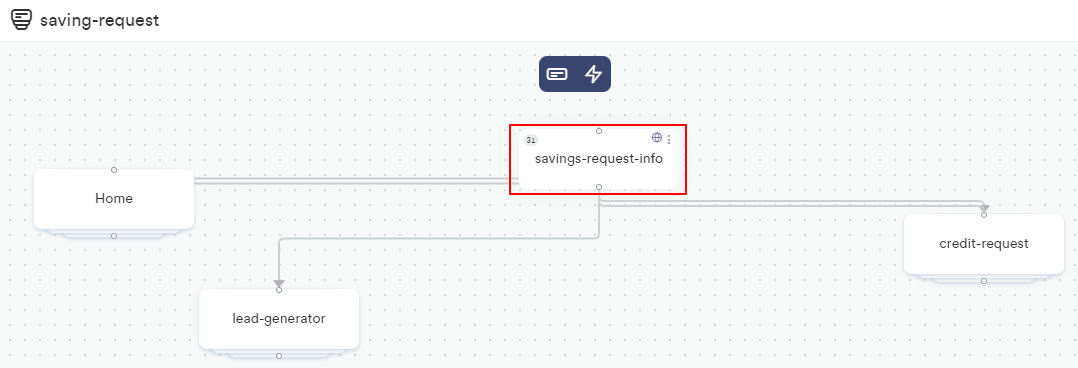
Which is connected to the Lead Generation activity:
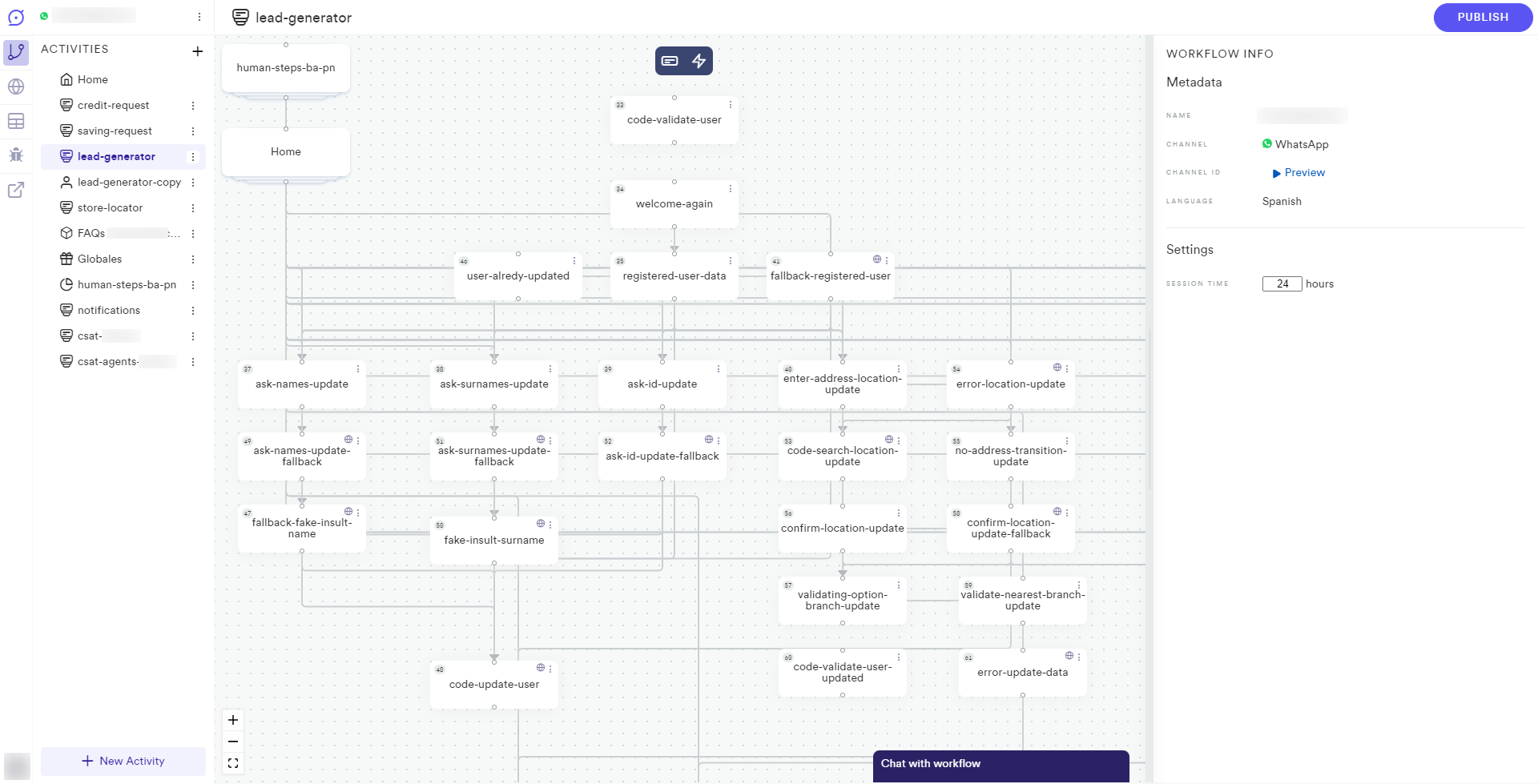
Flow Builder - Lead Generation example
click to enlarge
Continue with the creation of the Lead Generation activity
- Open the activity and enter a start step. This step works as an introduction to your Lead Generation, letting the user know the workflow will begin by asking some questions:
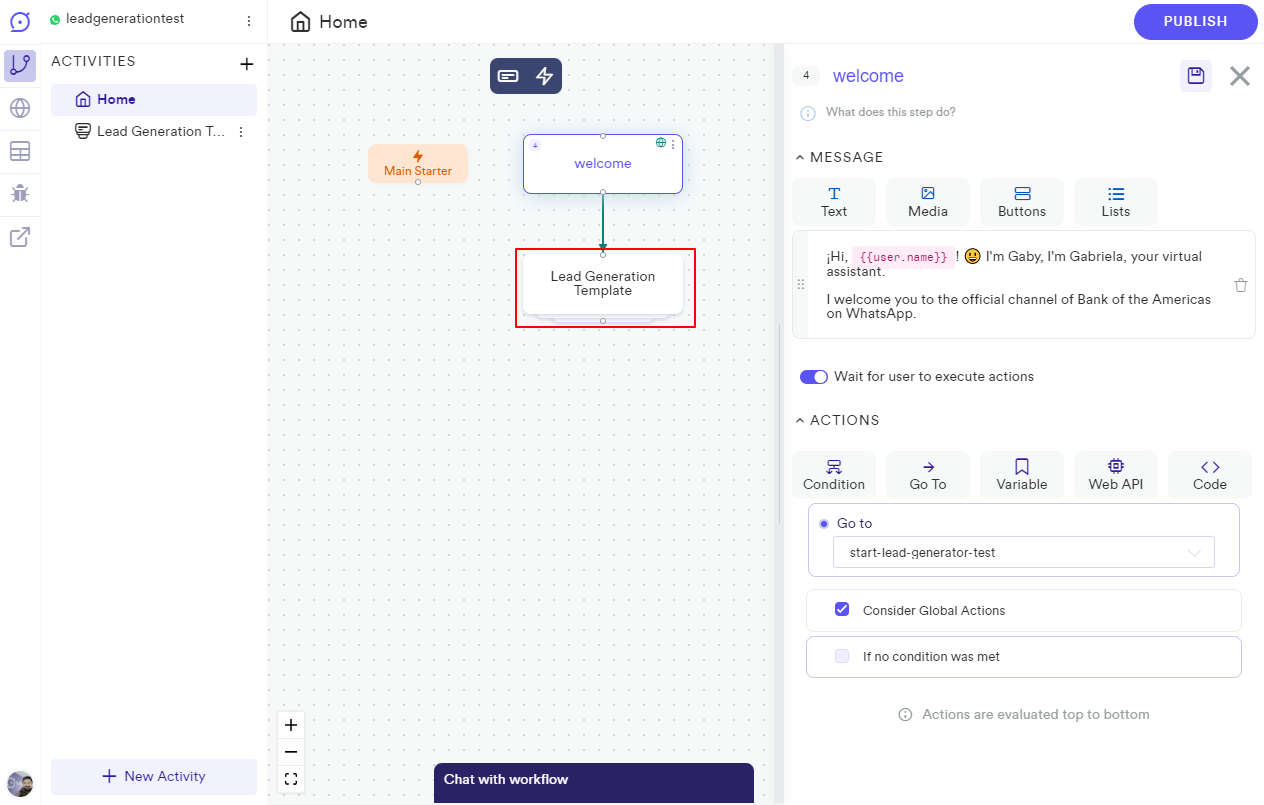
Start step
click to enlarge
- Enter your list of questions as a series of steps, a typical starting question would be the user's name. Enter the question step and add a fallback in case the user cannot provide an answer based on the options provided.
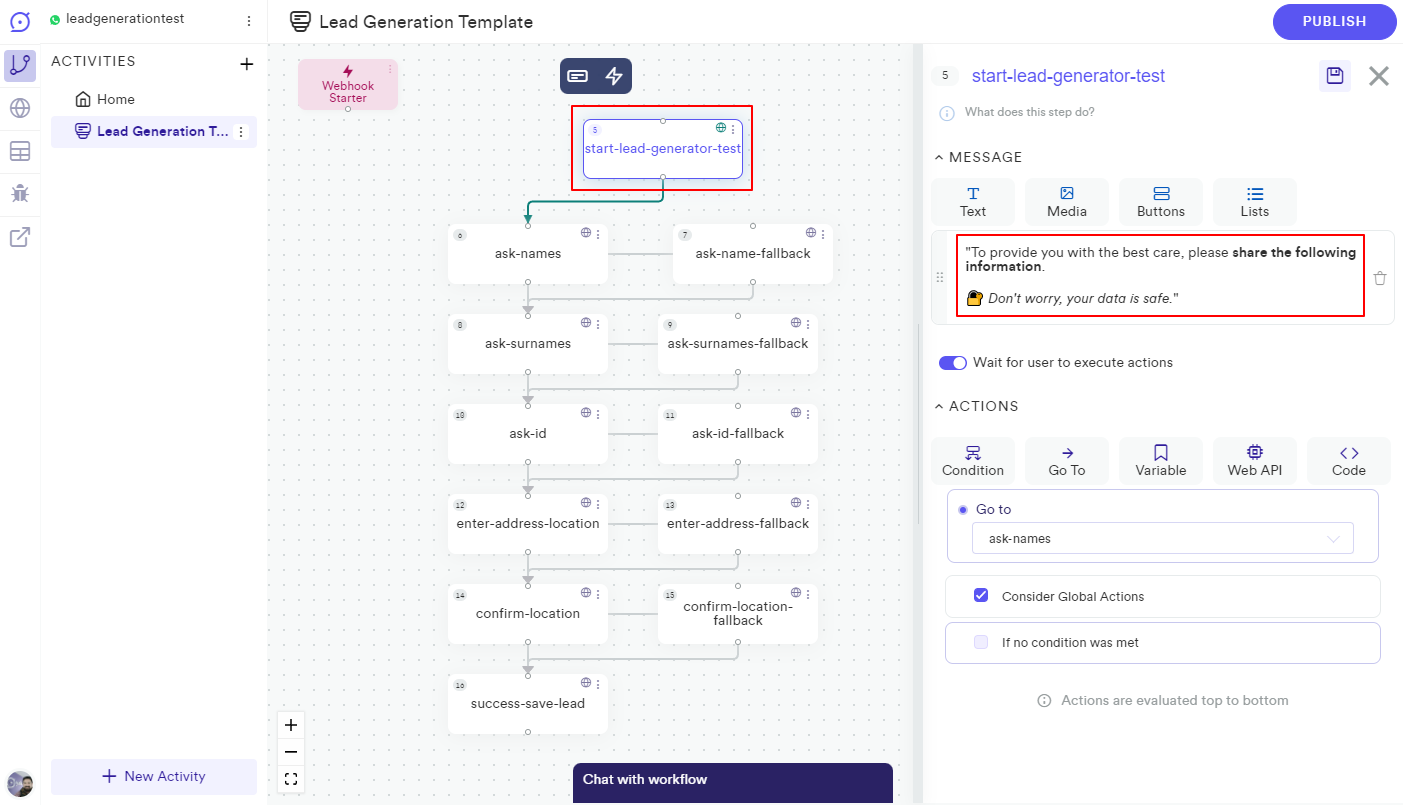
Questions and fallbacks
click to enlarge
Follow up by adding more questions and fallbacks.
After the Lead Generator has gathered enough helpful information specified in the requirements, you will send the user to an agent/salesperson interaction (like Front) or a CRM (like Salesforce).
- Use the final step to connect to an API or a Human Agent Transfer, as specified in this guide: Human Agent Transfer.
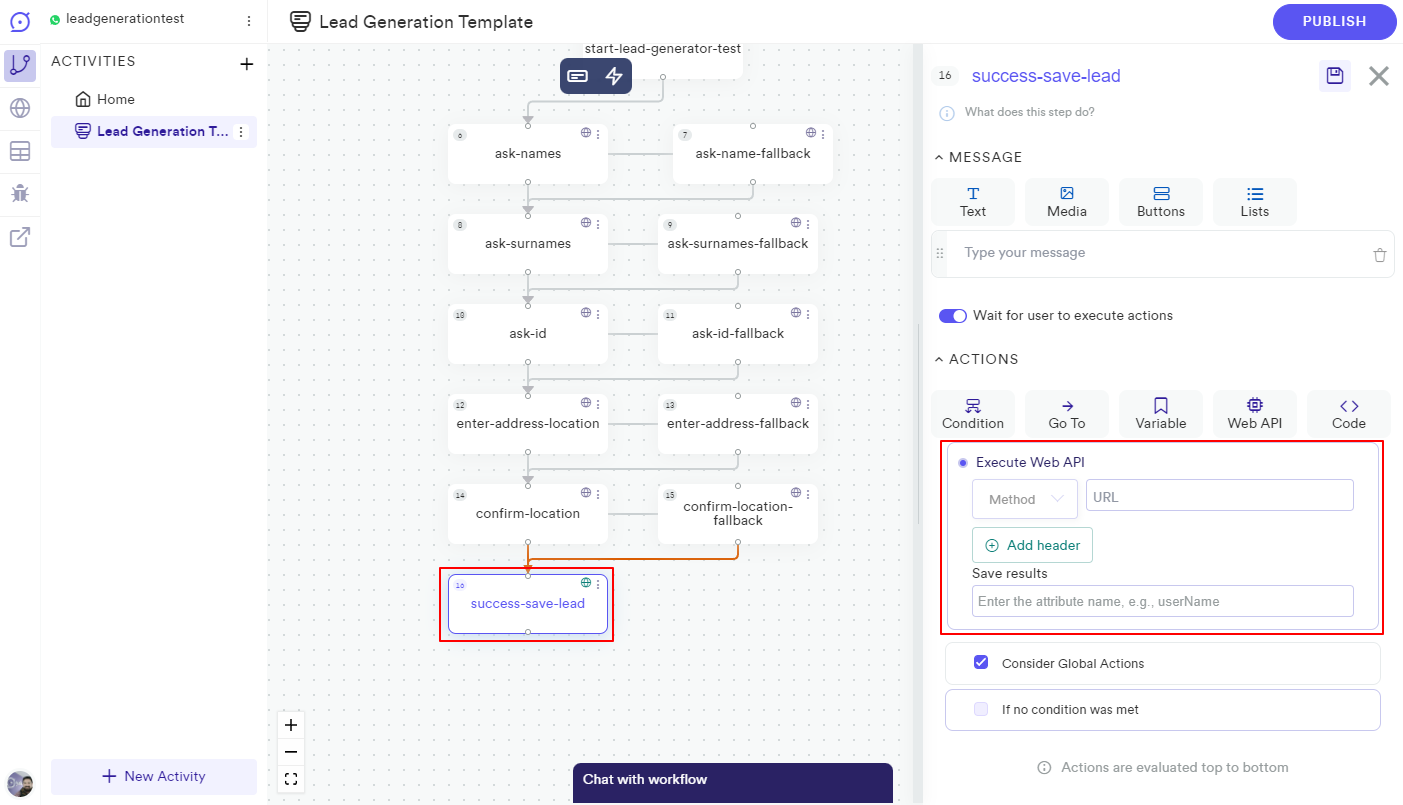
Connecting to a CRM's API or Human-Agent Transfer
click to enlarge
This is how this looks in the user WhatsApp communication:
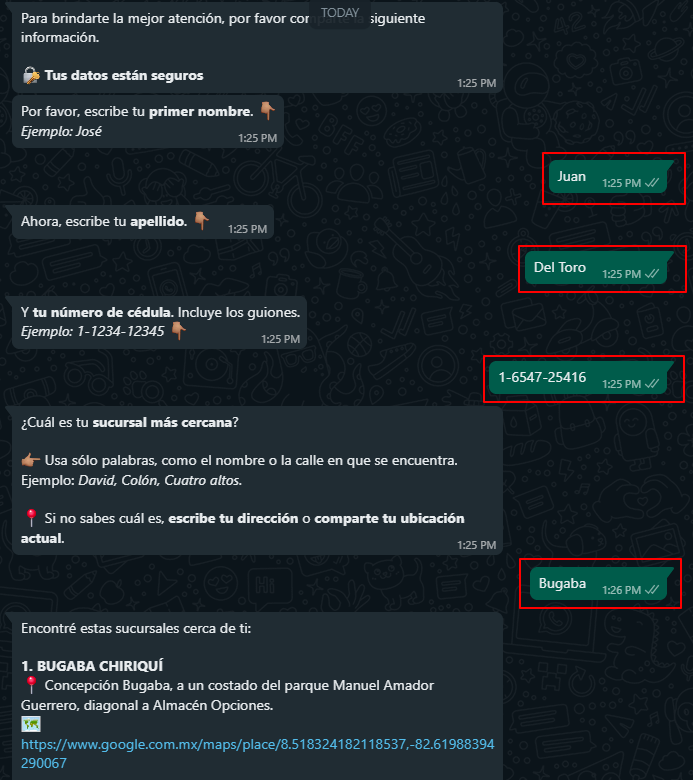
WhatsApp channel conversation of a Lead Generation activity
click to enlarge
And this is how the Flow responds when the lead has been generated:
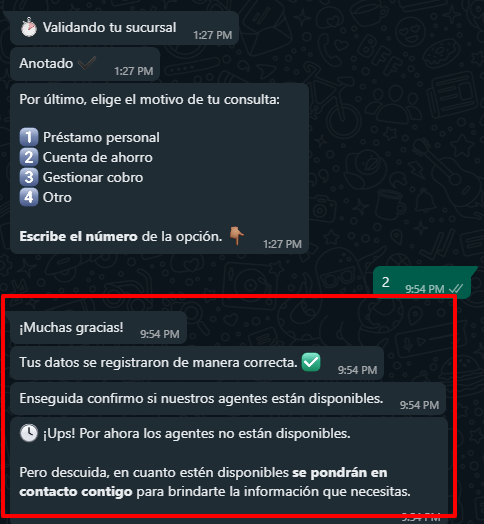
Example of the final step in a WhatsApp channel
click to enlarge
Where it means:
Thank you very much!
Your data was registered correctly. ✅
I'll confirm right away if our agents are available.
🕓 Oops! Agents are currently unavailable.
But don't worry, as soon as they are available, they will contact you to provide you with the information you need.
End Results
At the end of the Lead Generation activity, if the Flow has a connection to a human agent, the user can ask to be transferred to an agent to help finish the purchase or clarify any questions the user may have. When the user is transferred with the agent, the agent will have a summary of all the personal data on the user.
On the other hand, if there is no connection with a human agent, these contact details can be injected directly into the Client's CRM system.
A user who completes the Lead Generation becomes a qualified lead for an agent to attend to at that time or to contact them later to offer specific products.
Updated about 2 years ago
